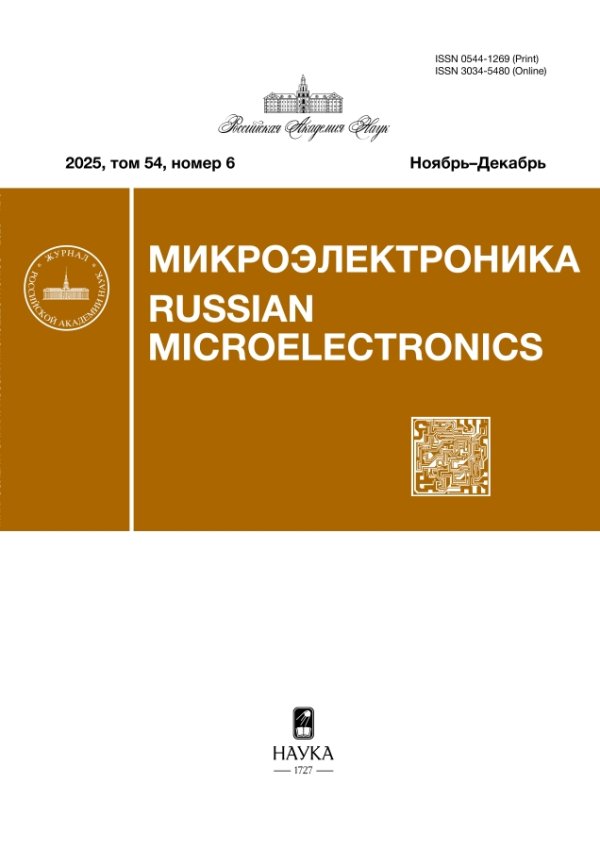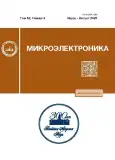Томографии детекторов с учетом мертвого времени
- Авторы: Богданов Ю.И.1, Катамадзе К.Г.1, Борщевская Н.А.1,2, Авосопянц Г.В.1,2, Богданова Н.А.1, Кулик С.П.2, Лукичев В.Ф.1
-
Учреждения:
- Физико-технологический институт им. К.А. Валиева Российской академии наук
- Центр квантовых технологий МГУ им. М.В. Ломоносова
- Выпуск: Том 52, № 4 (2023)
- Страницы: 249-255
- Раздел: КВАНТОВЫЕ ТЕХНОЛОГИИ
- URL: https://journals.rcsi.science/0544-1269/article/view/138551
- DOI: https://doi.org/10.31857/S0544126923700369
- EDN: https://elibrary.ru/FEIKNA
- ID: 138551
Цитировать
Полный текст
Аннотация
Методами численного моделирования с учетом эффекта мертвого времени разработаны алгоритмы расчета отклика детектора для потоков фотонов, имеющих различные распределения по числу фотонов, в том числе пуассоновское, фоковское и тепловое. На основе полученных результатов разработан метод томографии детекторов, а также алгоритм идентификации соответствующих элементов положительной операторно-значной меры (POVM). Экспериментальные исследования с использованием когерентных состояний показали близкое соответствие между результатами расчетов и экспериментальными данными.
Об авторах
Ю. И. Богданов
Физико-технологический институт им. К.А. Валиева Российской академии наук
Email: bogdanov_yurii@inbox.ru
Россия, 117218, Москва, Нахимовский просп., 36, корп. 1
К. Г. Катамадзе
Физико-технологический институт им. К.А. Валиева Российской академии наук
Email: bogdanov_yurii@inbox.ru
Россия, 117218, Москва, Нахимовский просп., 36, корп. 1
Н. А. Борщевская
Физико-технологический институт им. К.А. Валиева Российской академии наук; Центр квантовых технологий МГУ им. М.В. Ломоносова
Email: bogdanov_yurii@inbox.ru
Россия, 117218, Москва, Нахимовский просп., 36, корп. 1; Россия, 119991, Москва,
Ленинские горы, 1, стр. 35
Г. В. Авосопянц
Физико-технологический институт им. К.А. Валиева Российской академии наук; Центр квантовых технологий МГУ им. М.В. Ломоносова
Email: bogdanov_yurii@inbox.ru
Россия, 117218, Москва, Нахимовский просп., 36, корп. 1; Россия, 119991, Москва,
Ленинские горы, 1, стр. 35
Н. А. Богданова
Физико-технологический институт им. К.А. Валиева Российской академии наук
Email: bogdanov_yurii@inbox.ru
Россия, 117218, Москва, Нахимовский просп., 36, корп. 1
С. П. Кулик
Центр квантовых технологий МГУ им. М.В. Ломоносова
Email: bogdanov_yurii@inbox.ru
Россия, 119991, Москва,
Ленинские горы, 1, стр. 35
В. Ф. Лукичев
Физико-технологический институт им. К.А. Валиева Российской академии наук
Автор, ответственный за переписку.
Email: bogdanov_yurii@inbox.ru
Россия, 117218, Москва, Нахимовский просп., 36, корп. 1
Список литературы
- Hadfield R.H. Single-photon detectors for optical quantum information applications // Nat. Photonics. 2009. V. 3. № 12. P. 696–705.
- Shangguan M. et al. Dual-frequency Doppler lidar for wind detection with a superconducting nanowire single-photon detector // Opt. Lett. 2017. V. 42. № 18. P. 3541.
- Morimoto K. et al. Megapixel time-gated SPAD image sensor for 2D and 3D imaging applications // Optica. 2020. V. 7. № 4. P. 346.
- Yamazaki I. et al. Microchannel-plate photomultiplier applicability to the time-correlated photon-counting method // Rev. Sci. Instrum. 1985. V. 56. № 6. P. 1187–1194.
- Cova S., Longoni A., Andreoni A. Towards picosecond resolution with single-photon avalanche diodes // Rev. Sci. Instrum. 1981. V. 52. № 3. P. 408–412.
- Goltsman G.N. et al. Picosecond superconducting single-photon optical detector // Appl. Phys. Lett. 2001. V. 79. № 6. P. 705–707.
- Luis A., Sánchez-Soto L.L. Complete Characterization of Arbitrary Quantum Measurement Processes // Phys. Rev. Lett. 1999. V. 83. № 18. P. 3573–3576.
- Lundeen J.S. et al. Tomography of quantum detectors // Nat. Phys. Nature Publishing Group. 2009. V. 5. № 1. P. 27–30.
- Богданов Ю.И.И., Кривицкий Л.А., Кулик С.П. Статистическое восстановление квантовых состояний оптических трехуровневых систем // Письма в ЖЭТФ. 2003. V. 78. № 6. P. 804–809.
- Bogdanov Y.I. et al. Polarization states of four-dimensional systems based on biphotons // Phys. Rev. A. 2006. V. 73. № 6. P. 063810.
- Богданов Ю.И. и др. Статистическое восстановление оптических квантовых состояний на основе взаимно дополнительных квадратурных квантовых измерений // ЖЭТФ. 2016. Т. 150. № 2. С. 246–253.
- Bogdanov Y.I. et al. Multiphoton subtracted thermal states: Description, preparation, and reconstruction // Phys. Rev. A. 2017. V. 96. № 6. P. 063803.
- Bogdanov Y.I. et al. Optical polarization echo: Manifestation and study by methods of quantum tomography of states and processes // J. Exp. Theor. Phys. 2014. V. 118. № 6. P. 845–855.
- Bogdanov Y.I. et al. Quantum polarization transformations in anisotropic dispersive media // New J. Phys. 2013. V. 15. № 3. P. 035012.
- Dong D., Petersen I.R. Quantum estimation, control and learning: Opportunities and challenges // Annu. Rev. Control. 2022. V. 54. P. 243–251.
- Renema J.J. et al. Modified detector tomography technique applied to a superconducting multiphoton nanodetector // Opt. Express. 2012. V. 20. № 3. P. 2806.
- Feito A. et al. Measuring measurement: theory and practice // New J. Phys. 2009. V. 11. № 9. P. 093038.
- Natarajan C.M. et al. Quantum detector tomography of a time-multiplexed superconducting nanowire single-photon detector at telecom wavelengths // Opt. Express. 2013. V. 21. № 1. P. 893.
- Fiurášek J. Maximum-likelihood estimation of quantum measurement // Phys. Rev. A. 2001. V. 64. № 2. P. 024102.
- Grandi S. et al. Experimental quantum tomography of a homodyne detector // New J. Phys. 2017. V. 19. № 5. P. 053015.
- Zhang L. et al. Recursive quantum detector tomography // New J. Phys. 2012. V. 14. № 11. P. 115005.
- Wang Y. et al. Two-Stage Estimation for Quantum Detector Tomography: Error Analysis, Numerical and Experimental Results // IEEE Trans. Inf. Theory. 2021. V. 67. № 4. P. 2293–2307.
- Yang T.H. et al. Robust and Versatile Black-Box Certification of Quantum Devices // Phys. Rev. Lett. 2014. V. 113. № 4. P. 040401.
- Mogilevtsev D., Řeháček J., Hradil Z. Relative tomography of an unknown quantum state // Phys. Rev. A. 2009. V. 79. № 2. P. 020101.
- Migdall A. et al. Single-photon generation and detection. 1st ed. Elsevier, 2013. 593 p.
Дополнительные файлы















